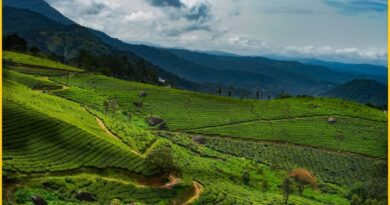“White Desert” Egypt- Take an Adventurous tour to the alien landscape.

The sand around the outcroppings is littered with quartz and deep-black iron pyrites, as well as small fossils. On the west side of the Farafra–Bahariya highway, some chalk towers get ‘inselbergs’ geomorphic feature, burst from the desert floor into a spectacular white canyon. The quantity of unearthly and beautiful wind-carved rock formations shaped in the form of giant mushrooms or pebbles is unequaled in any desert in the world.
About 50 km north are two flat-topped mountains known as the Twin Peaks. This is a favorite destination for the tourist. These symmetrical hills, all shaped like giant ant-hills, is spectacular. From here the road climbs a steep escarpment known as Pass of the Stairs. This is the main pass that leads into and out of the Farafra depression and marks the end of the White Desert. The Area around the white desert is full of interesting geological formations like the crystal mountain the black desert and the salt lake marun.

Crystal Mountain and lake Al Marun
Along, the desert floor some Rock formations are largely made of crystal. The most famous of the formations is the Crystal Mountain, actually, a large rock made entirely of quartz. It sits right beside the main road some 24km north of Naqb as Selim.

Lake Al Marun, a salt lake near Bahariya. There are many salt lakes all over the Western Desert, but Lake Al Marun is known for being a magnet for migratory. The shores of the lake are full of these large salt crystals. There is Black Desert about 30 miles south of Bahariya is Sahra al-Suda, an area of dozens of black-topped sand dunes.
Also read- “The only boiling river in the world” – Kills Everything That Falls Into It, Take a Geotourism around the Mysterious River
The White desert area offers unmatched and inspiring natural sanctuary far from the noise and pollution of urban centers. It is stretched west of the Farafra Oasis between the Nile Delta Valley and the Libyan border. Arriving at this place is like stepping onto a different planet, where serenity is a major feature.

How White desert formed
At the end of the cretaceous period, nearly 60 million years ago, a shallow seabed covered the deep layer of Nubian sandstone of this area. During the following 30 million years, 300m of limestone and chalk accumulated at the sea bottom. The current white desert stunning sculptures result from erosion. We still find many marine deposits on limestone layers like- mollusks, crustaceans, fishes, coral reefs,s, etc.

Limestone figures are seen dotting the chalk-white landscape in any part of the desert. The mushroom-shaped formations are 3-4.5 meters tall. Wind and sand over thousands of years fashioned beautiful forms -domes, minarets, castles, rabbits, and turtles.
The White Desert boasts several natural hot springs, including salt-water springs that offer a healing swimming experience. The area has ancient tombs, carvings, and caves left by the Roman civilization. The White Desert is best viewed at sunrise or sunset, in the light of a full moon, which gives the landscape an eerie Arctic appearance.



